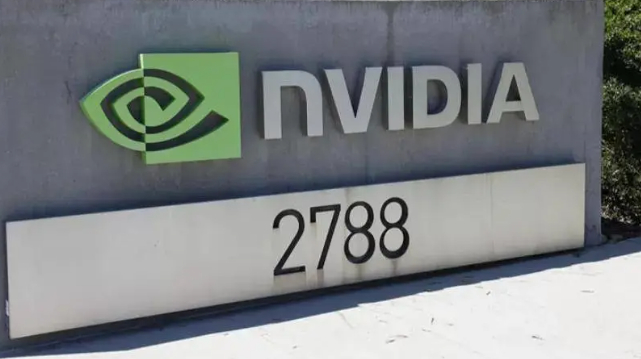
In recent years, the explosive growth of artificial intelligence (AI) technology has led to a surge in global chip demand, and chip company valuations have been rising. Giants such as Nvidia and ASML have achieved a leap in performance thanks to the strong demand for AI chips. According to data from market research institutions, the revenue of the world's top ten chip design companies in the first quarter of 2025 has exceeded US$77 billion, a year-on-year increase of 44%. However, under the surface of prosperity, potential US tariffs and trade tensions are quietly eroding the foundation of the industry, becoming a "gray rhino" risk underestimated by the market in the AI boom.
The US's gradually increasing tariff policy since 2024 has formed a structural impact on the chip industry chain. The first to bear the brunt is the soaring cost on the manufacturing side. The Trump administration's tariff threats (up to 49%) on semiconductor equipment, raw materials and end products have forced companies to re-evaluate their investment layout. TSMC's $100 billion plant construction plan in the United States has led to an increase in equipment costs due to tariffs, and the price of each ASML extreme ultraviolet lithography machine may soar by 30%, directly squeezing manufacturers' profit margins. Secondly, the pressure of supply chain restructuring has intensified. Rising tariff costs at packaging bases in Vietnam and Southeast Asia have forced Nvidia and other companies to suspend their expansion plans, and the expected growth rate of global AI server shipments has been halved from 30% to 24.5%. Finally, the risk of terminal demand transmission has emerged - consumer electronics giants such as Apple have accumulated cost pressure due to tariffs, indirectly suppressing chip purchases, forming a vicious cycle.
Uncertainty in trade policies is forcing chip companies to postpone key investments. ASML warned that the US's 30% tariff on European equipment could lead to the failure of its 2026 revenue target, and its stock price plummeted 11%. Although TSMC's financial report expects a 54% surge in profits, its market value has evaporated by 20%, reflecting the market's deep concerns about policy risks. Nvidia lost $5.5 billion due to export restrictions, which further highlights the "fatal blow" of trade barriers to the performance of giants. Against this background, global chip manufacturers generally adopt a "defensive strategy", reducing capital expenditures, slowing down technology research and development, and even turning to "low-risk areas" to build factories, which may weaken the industry's innovation momentum in the long run.
The current market's fanatical pursuit of AI chips is in sharp contrast to the medium- and long-term risks brought about by tariffs. Investors over-focus on short-term performance growth and valuation inflation, but underestimate the "systemic crisis" caused by tariffs: 1. Technology iteration is hindered - tariffs push up the cost of advanced equipment, or cause companies to abandon high-risk technology research and development; 2. Domestic substitution paradox - although China's chip autonomy is accelerating, the fragmentation of the global supply chain makes it difficult for "local substitution" to fill the overall gap; 3. Stagflation transmission effect - the Federal Reserve warns that tariffs will push up inflation, and the decline in household consumption capacity will further suppress chip demand. Multiple risks are superimposed, which may cause the industry to suddenly shift from "high-speed growth" to "structural recession".
Faced with the shadow of tariffs, chip companies need to build a "double response strategy": in the short term, they can alleviate the impact through diversified supply chains (such as strengthening production capacity in non-tariff areas in Southeast Asia) and cost control technologies (such as ASML's supply chain collaborative cost reduction plan); in the long term, they need to accelerate the "technology-policy" collaboration and promote the closed loop of the localized ecosystem. For example, Huawei's Ascend chip performance is comparable to that of international giants, and with Baidu's "export to domestic sales" platform, it has initially built a "moat" for China's AI chips. In addition, the market also needs to be alert to "policy black swans" - the dynamic changes in Trump's tariff policy may trigger a new round of industry shocks at any time.
The fire of the AI craze is still burning, but the cold current of tariffs and trade tensions is quietly approaching. Behind the narrative of rising valuations of chip companies, there is a deep crisis of supply chain disruptions, stagnant investment, and technological stagnation. Only by facing up to risks and balancing short-term growth and long-term resilience can we find a way to survive in the chess game of policy games. This game, which is ignored by the market, may determine the ultimate direction of the future global chip industry landscape.

The U.S. third-quarter GDP growth rate, strikingly highlighted at 4.3%, not only surpassed market expectations but also earned the label of "the fastest in two years."
The U.S. third-quarter GDP growth rate, strikingly highligh…
Recently, US personnel intercepted a "Century" super oil ta…
According to Xinhua News Agency, the subtle changes in the …
The rapid development of artificial intelligence has brough…
In December 2025, Taiwan's political scene was shaken by a …
When Apple appears for the Nth time on the list of penaltie…